Today we’re going to talk all about root rot, what it is, and how to spot it. I am also going to show you how to remove it and how to prevent it. so what exactly is root rot well root rot is a pretty common disease found in both indoor and outdoor plants. This disease essentially causes necrosis of the roots of a plant i.e. the rots This rotting occurs when the outer layer of the root that is responsible for nutrient and water absorption also known as the epidermis dies off leaving the inner tissue exposed.
Table of Contents
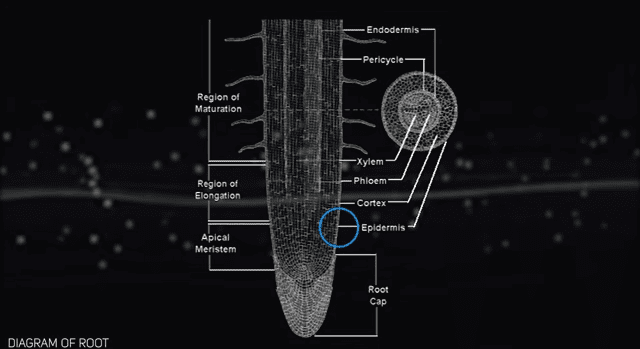
This leaves the root cortex unprotected and as a result, it also succumbs to the disease it’s pretty nasty. This disease can devour an entire root system and even progress up the mirror stem of the plant resulting in plant death
Brown Rot on Peach Trees: Effective Prevention Techniques
It is some good news though if you catch it early your plant can recover fully. so what specifically causes root rot if we can identify the cause we may be able also to identify ways of preventing it in the future.
What causes root rot
Over-watering of a house plant where the soil stays too wet for too long and essentially root rot develops. Poor drainage can also lead to a waterlogged situation resulting in root rot in plants.
but did you know that root rot can occur from severe underwatering of a plant? if a plant’s roots completely die out from underwater to the point of desiccation and then we water the plant again those roots will rot. so if we underwater the plant completely and then we saturate those roots you are creating a really nice mushy environment for those dead roots to just rot away and of course, they’re still attached to the plant which makes it dangerous and that is how the root rock can spread.
How To Prune Fruit Trees | Why do we prune fruit trees?
The use of contaminated soil or plants can introduce pathogens or bacteria to the root system of the plant.
Planting too deep can cause the suffocation of plants or lack of oxygen to the root system can create a healthy environment for the root system.
Injury to roots or damaged roots can be a potential cause of root rot.
Root rot can also occur shortly after importing plants from overseas from places such as Thailand or Indonesia importing plants in this way poses the risk of roots drying out completely whilst in transit as well as root death from strong chemical insecticides that the roots are dipped in before shipping out the plant from the grower roots can appear fine on arrival when this happens but root rot can still occur within a couple of weeks later it does depend.
Root rot can be caused by a variety of viruses bacteria and fungi. The bacteria and pathogens responsible for root rot are already found on your house plants that’s right they are always there. it’s not something that you catch they are always there.
Just the same as almost any surface in your home. where it harbors bacteria it’s very much the same thing this in itself isn’t actually a problem because the effects of the bacteria are balanced out by the plant’s natural defenses much in the same way if you want to think about it this way that we have an immune system which protects us from various illnesses and potential diseases it’s very much the same thing.
However, the pathogens responsible for the rot thrive in moisture which is why over-watering or insufficient drainage can dramatically increase the chances of rot Wet soil can suffocate the roots of a plant by dramatically lowering the oxygen level. yes believe it or not the roots of our plants much like us need oxygen in order to function.
Now root rot can be passed from plant to plant via spores. These spores can either be airborne or they can be transferred from various insects living in the substrate including fungus nerds yes I know as if we didn’t hate them enough already
How to grow Dictamnus albus and Is Dictamnus Albus toxic?
I know everyone hates fungus gnats but you’ll probably hate them even more when I tell you that they are a vector for root rot that’s right the feet of fungus gnats are what transfer the pathogens from one plant to another so the question is can root rot from one plant effectively spread and contaminate another plant and the simple answer is yes spores from an infected plant can contaminate another plant
However please remember that root rot absolutely cannot take hold on a new plant unless those ideal conditions are met. in excess moisture in this case so if you have any spores or pathogens transferred from a plant that has rotted and it contaminates a plant that has a well-draining substrate so it’s not too wet there is a very very low chance that this new plant will get any root rot at all. How to grow Dictamnus albus
Root rot symptoms or signs of root rot
let’s talk a little bit more about the actual symptoms of root rot and how to spot it. There are a few ways to spot root rot on a plant usually, the telltale signs are found on the roots themselves but if the rot is more severe the plant matter above the soil level can show various signs of stress as well. so it is a bit of an indicator but if the root rot is more severe the plant matter above the soil level can show various signs of stress
- Slow growth
- Yellowing leaves
- floppy or wilted appearance
- mushy stems
- black or brown spots on the leaves of the plant
- Root foul odor may be released from infected plant
It is important to note that these symptoms individually can also be a symptom of other issues for example yellow leaves and a floppy appearance could also mean underwatering this is why it’s a good idea to check to see if the soil is too wet and to further investigate the root system
If your plant is experiencing any of these signs it is time to expect the roots as it’s possible that the plant is indeed suffering from any rot now once you get a clear look at the roots of the plant it’s very important to check the color if your plant is in water or a soil-free substrate such as liqueur healthy roots are usually a color between white and beige.
They can appear darker brown though if they are in soil but they should not appear darker than a medium brown shade that is a warning sign. it’s worth a quick mention at this point of course that plants can have red or pink roots these are also healthy roots and this is normal of course.
It depends on your plant again, roots can appear browner than usual if they are in soil, and coir specifically actually can often stain the roots making them appear slightly darker than usual.
How to treat root rot or how to fix root rot
Now we need to talk about how to get rid of root rot so we’ve checked our plants and we’ve found rotting roots now what do we do so the
- make sure that our root system is free from any substrate at all this is honestly much easier to do if you’re growing plants in lekker or perlite but if you are growing your plants in soil then you should aim to remove as much soil from the roots as humanly possible
- the next thing we need to do is cut the diseased roots off but we must be careful to only cut off the parts that have rotted this is very important if the root rot has only occurred halfway along the root we’re only going to cut off halfway along the root with a couple of centimeters overlap just in case there’s some infection that we haven’t caught yet what you should not do is cut the root all the way back to the base of the plant as this root this remaining root is potentially still healthy so we absolutely do not want to remove more than we have to if you’re unsure which roots need to be removed it’s a good idea to gently pull on them because if they do need to be removed they will very very likely come off in your hands if you’re unsure about cutting the roots right away then it’s a good idea to use this method to remove most of the rot
- Afterwards of course we can tidy all of this up with a pair of sterile scissors
- Now that we’ve removed all the rot we’re going to dip the roots in a three percent hydrogen peroxide mix with water to a ratio of either one to one or two to one use one to one of course if you’re brave enough if in any doubts use two to one there is no need to leave the roots to soak a quick dip is all we really need to kill off any bacteria or pathogens that are still on this plant if you don’t have any hydrogen peroxide you can always use bleach this works out around about four to six drops of bleach to a liter of water that’s one quart of water for those who are in america you can optionally treat the plant with a fungicide at this point as well now that we’ve removed all of our rot it’s time to repot the plant now this is very very very important do not repot the plant into the same batch of substrate as it is contaminated if you’re using lecker either sterilize it or discard it completely and use fresh liquor the same goes for your preferred potting mix also clean and sterilize the pot that the plant was previously in if you’re going to use the same plot if not obviously get a new pot
- if there is a substantial loss of root please consider downsizing your pot to make sure that the plant won’t get over-watered once you’ve repotted .it’s a great idea to always pot a plant according to the root mass of the root ball
- now the next one might not be so obvious and I don’t really see people talk about this but do not fertilize your plant . I’m going to tell you why if we deny our house plant any further nutrients it will actually trick the plant into placing more of its energy into growing a larger root system than growing foliage or anything else and it will do this in order to source the missing nutrients which is exactly the effect that we want in this situation
- remove some of the leaves of the plant it might seem counterproductive but it’s likely that the newly diminished root system will not be able to provide enough moisture to sustain the entire plant this will actually place even further stress on the plant at this point it’s actually a good idea to remove an amount of foliage proportional to the amount of root that you’ve just lost
Preventing Root Rot
let’s focus on preventing any more cases of this happening in the future here are some things that I would personally go about doing.
Root rot mainly occurs when the water you’re using has a low pH or a low amount of oxygen so try to keep your pH between 5 and 6.5 depending on your plant’s requirements i know that might seem slightly acidic but that’s actually what plants thrive. They don’t necessarily thrive in a neutral solution of about seven
Do not overfeed your house plants because too much fertilizer can burn the root system and kill the roots once the roots are dead they very often rot whilst they’re still attached to the rest of the plant and this rot can very very easily spread up the stem of the plant this does account for soil as well as liquid.Whale Fin Sansevieria Plant
Do not reuse any old infected soil for any reason at all soil taken from a rotted root system is contaminated with all of the pathogens that are needed for rot and if you do the wrong thing again with a separate plant using this substrate this will spread to further plants.
There are a couple of products that you can use to prevent root rot from happening to any of your other house plants. I’d like to tell you about cinnamon. so cinnamon is not only a natural fungicide but it is also a pesto turned and it can even be used as a rooting agent sprinkle some on the soil to repair various insects or you can go one step further and make yourself a DIY fungal spray bottle to ward against mushrooms and other things growing on top of your soil.
You can use a mixture of just three percent hydrogen peroxide with an equal volume of water. hydrogen peroxide has a few benefits for your house plant would you believe it? you can use a weaker version of this spray on foliage but we’re going to concentrate on the roots so the benefit of hydrogen peroxide is the first thing it is very good at doing is killing off any bacteria that may cause harm to your plants or various types by the way it also adds oxygen to your root system
hence hydrogen peroxide when you use hydrogen peroxide in this way you may see the mixture bubble which is all of that lovely oxygen this extra oxygen not only encourages root growth but also kills the pathogens responsible for the root rot so it’s essentially killing two birds with one stone it’s killing all the pathogens that cause any issues and it’s also providing additional oxygen for the roots of your plant to thrive
What does root rot look like
You can identify the root rot by its color infacted the root can be in dark brown or black colour. Root rot causes the root to be slimy, mushy, and soft. Sometimes you can smell a foul odor released by the infected root .
Major of the symptoms occur below the ground but you can also see some of the symptoms above ground like wilting, yellowing leaves, and lack of growth. You can see below images of root rot.
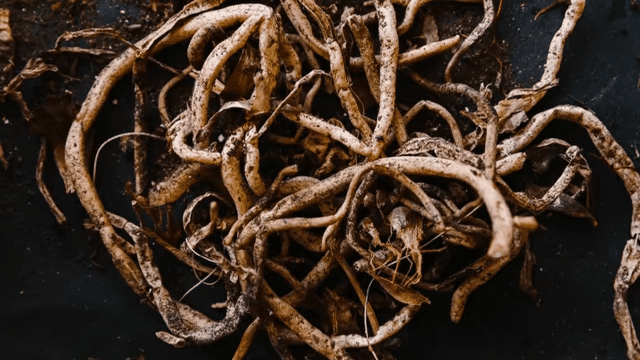

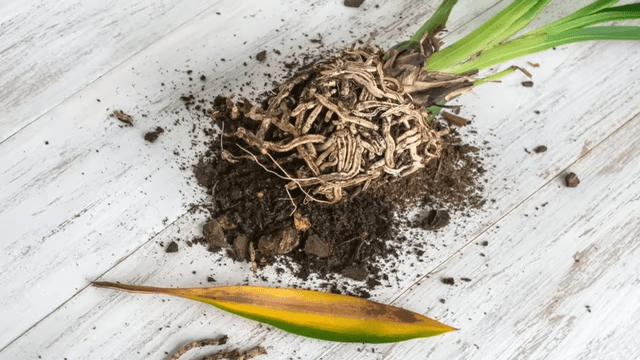
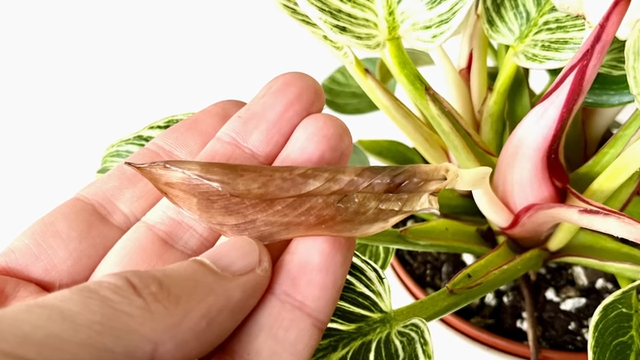
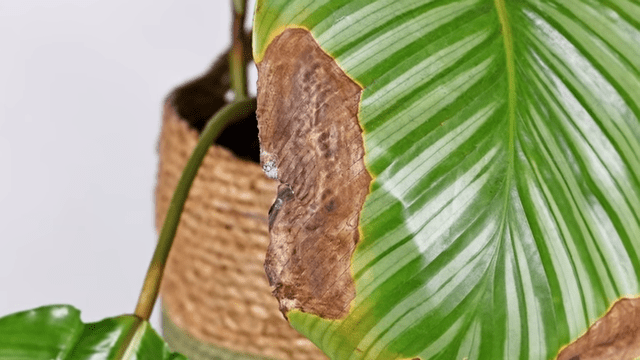
Root rot vs healthy roots
Root Rot images as shown below
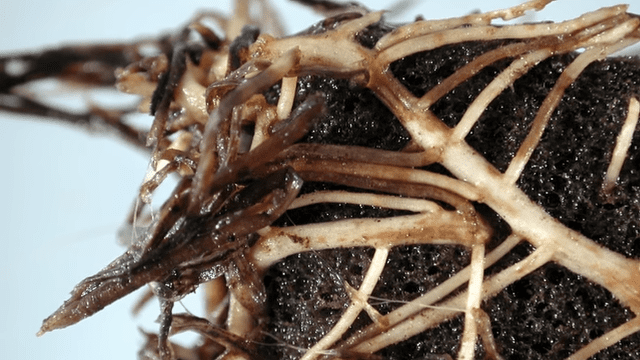
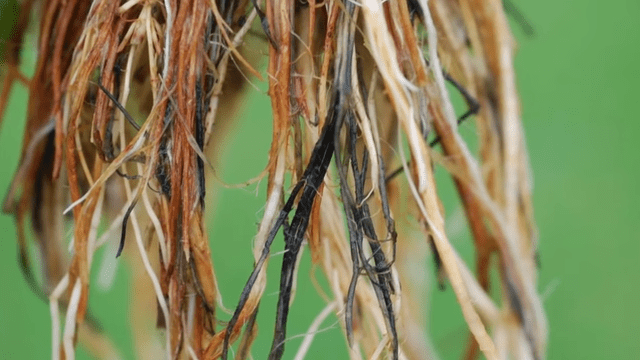
Health root images as shown below
Hypericum Hidcote or St John’s Wort: The ultimate info about the golden yellow flower:
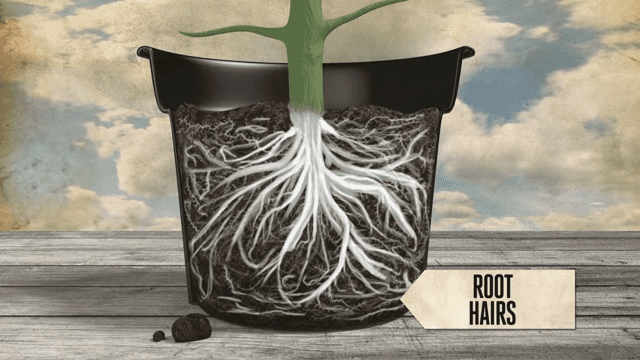
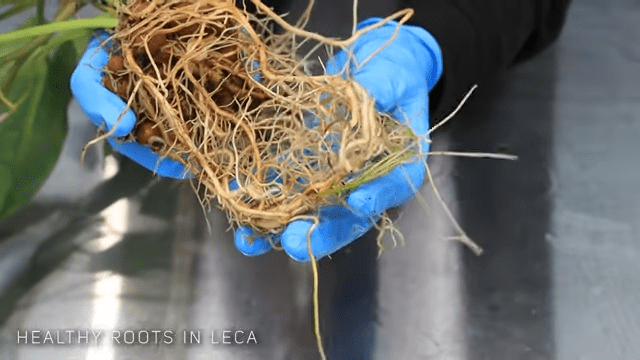
What does root rot smell like
The smell of root rot can vary on the type of fungus infecting the root and stage of infection. In general, a foul odor is described as musty, rotten, earthy, or sour released from the root rot. It is similar to the smell of decomposing organic matter or stagnant water.

